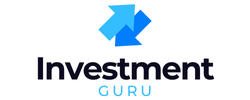For homeowners and buyers alike, understanding mortgage lingo is crucial. One of the most common points of confusion is the difference between PITI and principal and interest. These terms show up on mortgage statements, loan estimates, and budgeting worksheets—but they’re not interchangeable.
In fact, knowing how they differ can help you plan better, avoid unexpected costs, and communicate more effectively with lenders.
Table of Contents
What Is PITI in a Mortgage?
PITI stands for:
- Principal – The actual loan balance you’re paying down
- Interest – The cost of borrowing the money
- Taxes – Your annual property taxes, broken into monthly installments
- Insurance – Homeowners insurance (and sometimes mortgage insurance)
PITI represents your total monthly mortgage payment. Lenders often use PITI to evaluate your mortgage affordability.
What Does Principal and Interest Mean?
Principal and interest (PI) refers only to the amount you’re repaying on the actual loan:
- Principal reduces the amount you owe.
- Interest goes to the lender as their earnings on your loan.
This is the “core” mortgage payment and doesn’t include the taxes or insurance components.
Key Difference Between PITI and Principal and Interest
| Aspect | PITI | Principal & Interest |
|---|---|---|
| What It Covers | Loan + Taxes + Insurance | Loan Only |
| Changes Over Time | Can change due to tax/insurance updates | Usually fixed (if fixed-rate loan) |
| Used For Budgeting | Yes | No, it’s partial |
| Escrow Account Needed | Usually | Not required |
| Amount | Higher | Lower |
PITI: The Full Monthly Mortgage Picture

Let’s say your monthly mortgage payment breaks down like this:
- Principal & Interest: $1,200
- Property Taxes: $300
- Homeowners Insurance: $100
Total PITI = $1,600
This is what you actually pay to your lender each month. They hold the tax and insurance portion in escrow and pay your bills when they’re due.
Principal and Interest: The Loan-Only Payment
Using the above example, your PI is just $1,200. This amount is directly tied to:
- Your loan amount
- Interest rate
- Loan term
It doesn’t change unless you refinance or choose an adjustable-rate mortgage (ARM).
Real-World Example: Comparing PITI vs. PI Payments
| Component | Monthly Amount |
|---|---|
| Principal & Interest | $1,200 |
| Property Taxes | $300 |
| Homeowners Insurance | $100 |
| PITI Total | $1,600 |
Understanding this difference is crucial when comparing mortgage quotes. A lender who only tells you PI is giving you an incomplete picture.
Why Lenders Use PITI in Underwriting
Lenders assess your Debt-to-Income (DTI) ratio to determine if you can afford a mortgage. They always use PITI to get the most accurate monthly debt figure.
So even if PI looks affordable, PITI might push your budget too far.
How PITI Affects Your Monthly Budget
PITI gives you a full snapshot of what you’ll pay monthly. It’s essential for:
- Budget planning
- Emergency savings allocation
- Long-term affordability
Many homeowners are surprised when they see the full PITI amount after being quoted just PI during pre-approval.
Escrow Accounts and PITI
When you pay PITI, your lender usually manages an escrow account to cover:
- Annual property tax bills
- Homeowners insurance premiums
This ensures these bills are paid on time and protects the lender’s investment.
Is PITI Always Required?
Not always. Some lenders let you waive escrow, especially if your down payment exceeds 20%. In that case, you’d be responsible for paying taxes and insurance separately.
However, government-backed loans like FHA or VA loans usually require escrow, making PITI mandatory.
Can PITI Change Over Time?
Yes—especially the T and I (taxes and insurance) components. Property taxes can increase annually, and insurance premiums may spike due to:
- Market changes
- Natural disasters
- Inflation
While PI may stay fixed in a fixed-rate loan, your total PITI can still rise.
Which Is More Important to Track: PITI or PI?
For budgeting? PITI
For loan comparison? PI
You should focus on PITI when planning monthly finances, but compare PI when evaluating different loan offers and interest rates.
Impact of PITI on Loan Approval
Mortgage lenders use PITI to calculate DTI ratio, which usually must stay below 43% (varies by lender). If taxes and insurance push the payment too high, you may not qualify—even if the base PI seems manageable.
Do All Lenders Quote PITI?
Not always. Some may only mention PI to make the loan seem more affordable. It’s crucial to ask for full PITI estimates during pre-approval to avoid sticker shock.
Mortgage Types and How They Use PITI
- Conventional Loans: PITI optional if 20% down
- FHA Loans: PITI required
- VA Loans: Usually PITI with escrow
- Jumbo Loans: Varies, but PITI often used for risk calculation
What Expenses Are Included in PITI?
- Principal – Reduces loan balance
- Interest – Cost of borrowing
- Taxes – Local property taxes
- Insurance – Homeowners and sometimes PMI (Private Mortgage Insurance)
HOA dues, maintenance, and utilities are not part of PITI.
What Happens If You Miss a PITI Payment?
Missing a PITI payment is serious. You risk:
- Late fees
- Credit damage
- Foreclosure
If your taxes or insurance go unpaid due to missed escrow payments, your lender may step in—and charge you even more.
Is It Possible to Separate Insurance or Taxes?
Yes, but only if:
- Your lender allows escrow waiver
- You have strong credit and a large down payment
- You sign a waiver accepting responsibility
However, you’ll need to manage and budget these annual payments yourself.
Can PITI Be Lowered Over Time?
Yes. Ways to reduce your total PITI:
- Refinance to a lower interest rate
- Appeal property tax assessments
- Shop around for better insurance rates
- Eliminate PMI once you reach 20% equity
PITI and Property Taxes Explained
Location matters. For example:
- Texas and New Jersey have high property taxes = higher PITI
- Hawaii and Alabama have lower taxes = lower PITI
Always research local tax rates when home shopping.
How Insurance Affects Your PITI
Changes in your:
- Coverage
- Provider
- Location risk profile
…can all affect the “I” in PITI. Flood zones, hurricanes, or wildfire risks often raise premiums—and therefore your monthly mortgage payment.
Homeowner Association (HOA) Fees and PITI
No—HOA fees are not included in PITI.
But they still affect affordability and should be considered in your overall housing cost.
Refinancing and PITI
When you refinance:
- PI changes (new loan terms)
- T and I stay the same unless you change escrow, insurance, or appeal your taxes
Always request a new PITI estimate when refinancing to assess real savings.
FAQs About PITI and Principal and Interest
What does PITI stand for in mortgages?
PITI = Principal, Interest, Taxes, Insurance.
Is PITI higher than principal and interest?
Yes, it includes additional housing costs beyond the loan itself.
Can PITI change even with a fixed-rate mortgage?
Yes—if taxes or insurance go up, your payment will increase.
Why do lenders focus on PITI when approving loans?
Because it reflects the real monthly burden on the borrower.
Are HOA fees part of PITI?
No, but they still impact your housing budget.
Conclusion
Understanding the difference between PITI and principal and interest is critical for smart home buying and long-term financial planning. While PI tells you what you owe on your loan, PITI gives you the full picture of your monthly obligation.
Don’t be misled by base loan quotes. Ask for the full PITI, factor in changes over time, and always budget for the total cost of homeownership—not just the mortgage.
Outbound Links:
- Consumer Financial Protection Bureau (CFPB) – Mortgage Glossary
- Fannie Mae – Mortgage Components Explained
- HUD – Understanding Escrow Accounts
- Zillow – Real-Time Property Tax Estimates


